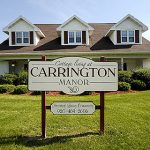Investors familiar with commercial real estate typically find they need to look at senior housing investment opportunities through a different lens.
“When they focus on the big picture, what they invariably see is that senior housing has extensive upside to capture but very low data correlation with the macro-economic factors that impact commercial real estate,” says Cambridge Realty Capital Companies Chairman Jeffrey A. Davis.
Cambridge is one of the nation’s leading senior housing/healthcare lenders. The company’s principal investment strategy includes direct acquisitions, joint ventures and sale/leasebacks through its Cambridge Investment and Finance Co. subsidiary.
Mr. Davis says the company has created the Cambridge Economic Demand Criteria Chart (CEDCC) as a way to address both the similarities and differences between demand for commercial real estate and senior housing/healthcare properties.
By definition, Mr. Davis says commercial real estate includes core properties such as office buildings, industrial facilities, retail facilities and multifamily apartments. When considering properties in this category, the discussion typically focuses on markets and sub- markets, occupancy, new construction, the age of facilities, and a number of other miscellaneous components depending upon product type and where it’s located.
“Demand for commercial real estate always revolves around which product type is doing better or worse but also on market demand, current supply, new construction, the age of existing stock and the rent per square foot for existing real estate versus new construction. Discussion rarely focuses on the true demand metrics and the way it impacts commercial real estate on a macro- economics basis,” he said.
Mr. Davis says senior housing has a unique set of demand criteria. But the market variables and demand factors that apply to commercial real estate properties are not a major worry.
“When speaking solely about demand, senior housing cannot be artificially stimulated or based on multiple variables. It’s purely a function of an aging population and built-in demographic trends.”
Mr. Davis said the major demand and economic factors in the CEDCC created by Cambridge are aging, job growth, GDP growth, positive or negative monetary policy, and the price of oil.
“Commercial real estate is impacted by – and has a major correlation to – four of the five data points, but only a minor correlation with demographics and aging. Conversely, senior housing’s only major correlation is with the demographics and aging data point and not the others,” he said.
“It’s something for investors who already have or will be discovering the space to think about,” he added.




